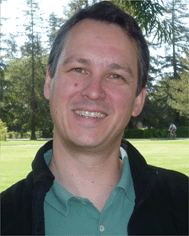Themed issue on water splitting and photocatalysis
Shannon W.
Boettcher
a,
Thomas E.
Mallouk
b and
Frank E.
Osterloh
c
aDepartment of Chemistry and Biochemistry, University of Oregon, Eugene, Oregon 97403, United States. E-mail: swb@uoregon.edu; Fax: +1-541-346-4643; Tel: +1-541-346-2543
bDepartments of Chemistry, Biochemistry and Molecular Biology, and Physics, The Pennsylvania State University, University Park, Pennsylvania, 16802, USA. E-mail: tem5@psu.edu; Fax: +1-814-865-2927; Tel: +1-814-863-9637
cDepartment of Chemistry, University of California, Davis, CA 95616, USA. E-mail: fosterloh@ucdavis.edu; Fax: +1-530-752-8995; Tel: +1-530-754-6242
 Shannon W. Boettcher |
 Thomas E. Mallouk |
 Frank E. Osterloh |
In December of 2015 representatives of 195 countries passed the Paris agreement to reduce carbon output “as soon as possible” and to do their best to keep global warming “to well below 2 degrees C”. As the next step, countries need to establish concrete targets for reducing their emissions and for developing alternative energy systems to replace fossil fuels.
While solar photovoltaic power is becoming increasingly cost-competitive with electricity generated from fossil fuel resources, approximately 80% of the world's current energy economy involves combustible fuels. Many scientists agree that sunlight-powered fuel production, or artificial photosynthesis, presents a realistic opportunity to provide fuel for the world in a more sustainable way. However, implementing solar fuels on a global scale remains a technological challenge that cannot be overcome without further advances in basic science.
From a fundamental perspective, artificial photosynthesis is a materials development problem, as the compounds to capture and convert the energy of sunlight, effectively, reliably, and inexpensively do not yet exist. There are also still significant knowledge gaps on the electronic structure of semiconductors and metal oxides and on the effect of impurities and defects on carrier lifetimes and transport. Interfaces play a central role in solar energy to fuel conversion, as they mediate charge transport between solid and liquid phases and control interfacial recombination, but yet the atomic details of such interfaces, and their effects on photoelectrochemical processes are often not known.
Because these issues are connected, progress in artificial photosynthesis requires collaboration between scientists and engineers. This thematic issue on ‘Water Splitting and Photocatalysis’ intends to stimulate that interdisciplinary exchange by showcasing several recent developments in the area of solar fuels science.
The collection includes contributions to materials discovery, device engineering, and advanced characterization, as well as fundamental studies on electrocatalysis, photoelectrochemistry and theory. A few examples are highlighted here:
In their paper ‘A simplified theoretical guideline for overall water splitting using photocatalyst particles’ (DOI: 10.1039/C5TA06983A) Kazuhiro Takanabe and coworkers perform two-dimensional calculations with classical semiconductor device equations to achieve a more quantitative understanding of the intrinsic limitations of suspended photocatalyst particles for water splitting. The article by Sophia Haussener on ‘Utilizing modelling, experiments, and statistics for the analysis of water-splitting photoelectrodes’ (DOI: 10.1039/C5TA07328F) achieves a similar understanding for photoelectrodes.
Bertoluzzi and co-workers analyze the effects of surface states in water-oxidizing photoanodes in ‘Charge transfer processes at the semiconductor/electrolyte interface for solar fuel production: insight from impedance spectroscopy’ (DOI: 10.1039/C5TA03210E) the authors illustrate how one differentiates between direct hole transfer from the valence band and surface state-mediated hole transfer, shedding new light on complicated interfacial electron-transfer kinetics.
In two separate review articles Zetian Mi (DOI: 10.1039/C5TA07364B), and Lianzhou Wang and Gang Liu (DOI: 10.1039/C5TA07057K), survey the state of nitride and oxynitride compounds as light absorbers for photoelectrochemical water splitting. Because of their electronic structure and chemical stability, nitrides and oxynitrides offer a compromise between metal oxide absorbers and traditional main-group-element semiconductors for solar water splitting.
In ‘Benchmarking nanoparticulate metal oxide electrocatalysts for the alkaline water oxidation reaction’ (DOI: 10.1039/C5TA07586F), Charles McCrory and coworkers compare the electrocatalytic properties of nanostructured metal oxides as alternatives to iridium and ruthenium oxides . Replacing rare elements in electrocatalysts is essential to scaling up solar fuel production technology.
The guest editors would like to thank all contributors to this themed issue and the readers for their interest in the topic. We hope that you will enjoy this interdisciplinary collection on ‘Water Splitting and Photocatalysis’ as much as we do.
| This journal is © The Royal Society of Chemistry 2016 |
